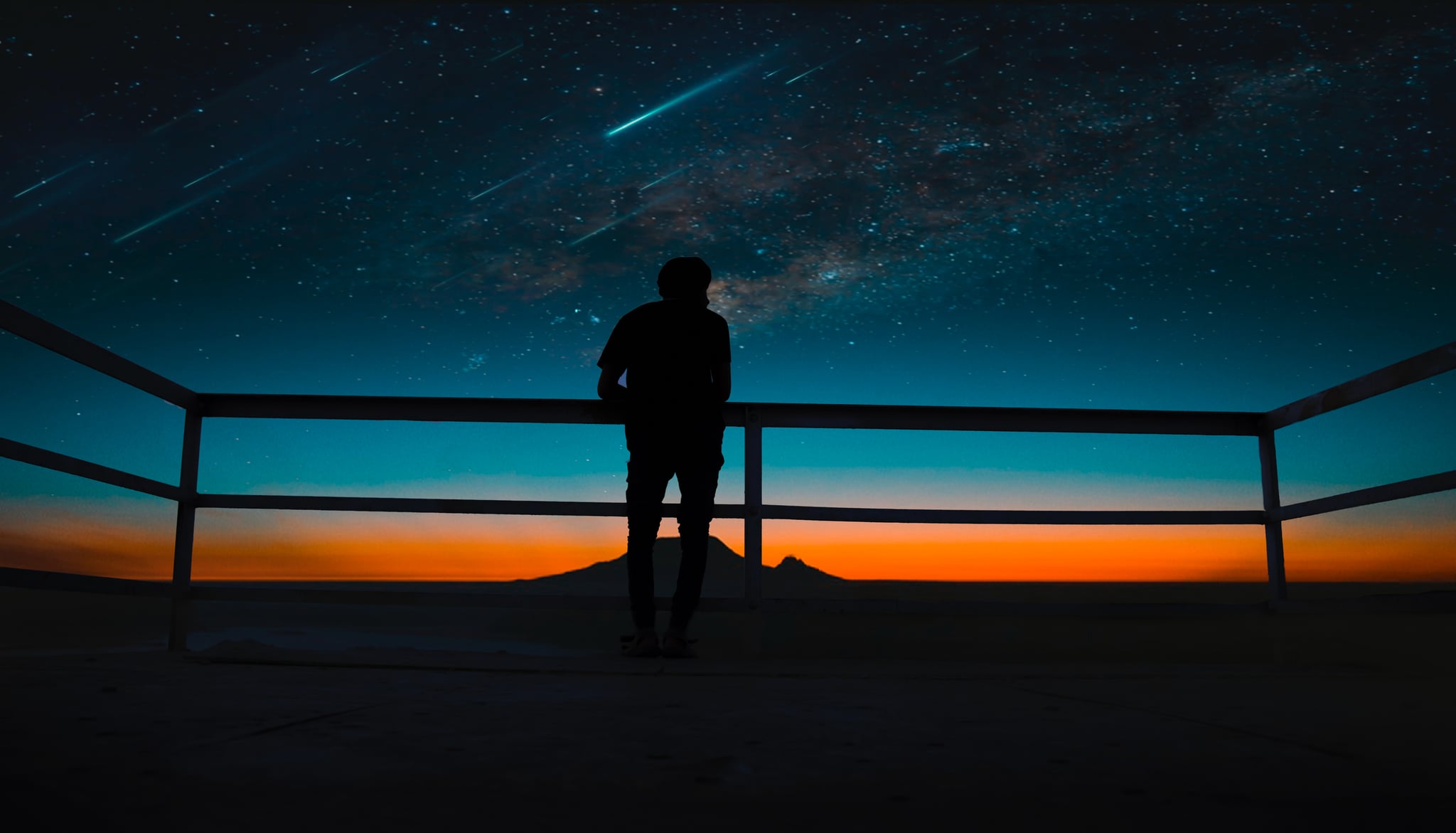
If you're looking for a fun celestial event [1], you're going to want to keep your eye on the sky! The annual Eta Aquarid meteor shower started on April 15 and will stretch through May 27. And while you may have been able to catch a handful of shooting stars per night in the right conditions, the meteor shower's peak is May 5 and 6, making this the time to start getting outside for some star-gazing.
During the peak of the Eta Aquarid meteor shower, observers north of the equator can hope to see 10 to 30 meteors per hour; people in the southern hemisphere will have an even better shot and spotting shooting stars. The Eta Aquarid meteor shower is such a strong shower that even though it takes place while the moon is lighting up the sky, [2] we should have a great chance of seeing it. Here's how to increase your chances — and more info about what the Eta Aquarid meteor shower is.
What Is the Eta Aquarid Meteor Shower?
The Eta Aquarid shower occurs when Earth passes through the debris trails of Halley's Comet, allowing for bits of ice and rock to burn up in our atmosphere as meteors. Fun fact: Halley's Comet was last seen in 1986 and will be visible again in 2061. But the debris that makes up the Eta Aquarid meteor shower was actually thrown off the comet in 390 BC!
The shooting stars come from the constellation Aquarius [3], which is how the natural phenomena got its name. This event occurs twice a year with Halley's Comet and will be viewable again in the fall, called the Orionid meteor shower.
How Can I Watch the Eta Aquarid Meteor Shower?
The best way to watch this shower (and any meteor shower) is to get outside and away from light pollution. The darker the sky, the better. We suggest lying flat on your back as well so you can really take it all in, and allowing yourself at least 30 minutes for your eyes to fully adjust to the dark. During that time, resist the temptation to use your phone or anything else that emits light — you want your eyes to adjust so you can spot the subtle lights from the shooting stars.
Another tip: don't try to focus too hard on the constellation Aquarius; the shower should be visible across the sky, so look at nearby constellations too. You don't need binoculars or special equipment either, although if you have an astrophotography-friendly camera, that can be fun.
But don't worry if you miss the peak of the Eta Aquarid shower — the meteors are normally viewable at dawn a few nights before and after the peak as well.
When Is the Next Meteor Shower?
The next strong meteor shower after the Eta Aquarid Meteor Shower is the Southern Delta Aquariids [4], which is expected to peak on July 30, 2023 — but should be steadily occurring from late July to early August.